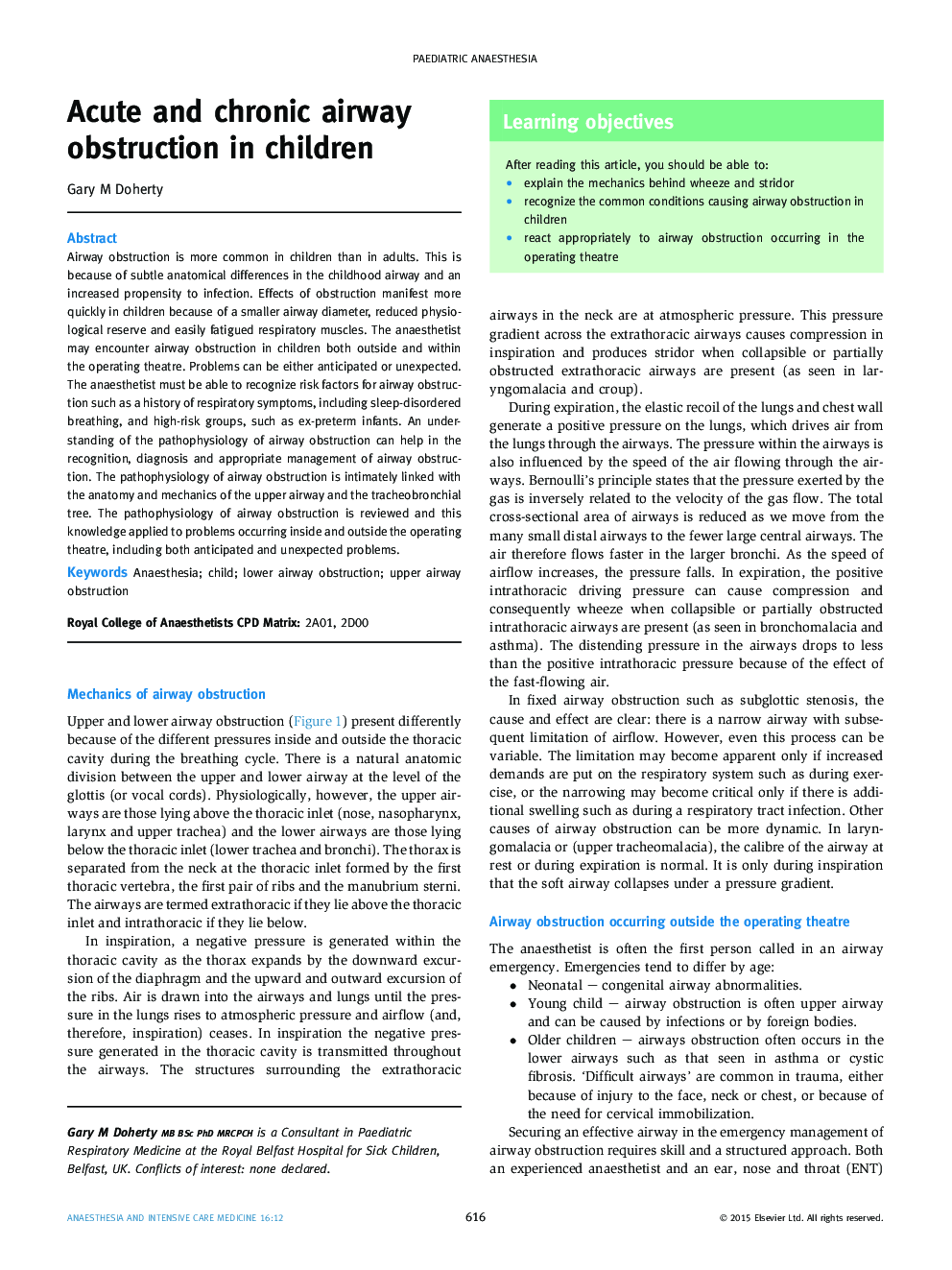| Article ID | Journal | Published Year | Pages | File Type |
|---|---|---|---|---|
| 2742058 | Anaesthesia & Intensive Care Medicine | 2015 | 6 Pages |
Airway obstruction is more common in children than in adults. This is because of subtle anatomical differences in the childhood airway and an increased propensity to infection. Effects of obstruction manifest more quickly in children because of a smaller airway diameter, reduced physiological reserve and easily fatigued respiratory muscles. The anaesthetist may encounter airway obstruction in children both outside and within the operating theatre. Problems can be either anticipated or unexpected. The anaesthetist must be able to recognize risk factors for airway obstruction such as a history of respiratory symptoms, including sleep-disordered breathing, and high-risk groups, such as ex-preterm infants. An understanding of the pathophysiology of airway obstruction can help in the recognition, diagnosis and appropriate management of airway obstruction. The pathophysiology of airway obstruction is intimately linked with the anatomy and mechanics of the upper airway and the tracheobronchial tree. The pathophysiology of airway obstruction is reviewed and this knowledge applied to problems occurring inside and outside the operating theatre, including both anticipated and unexpected problems.
